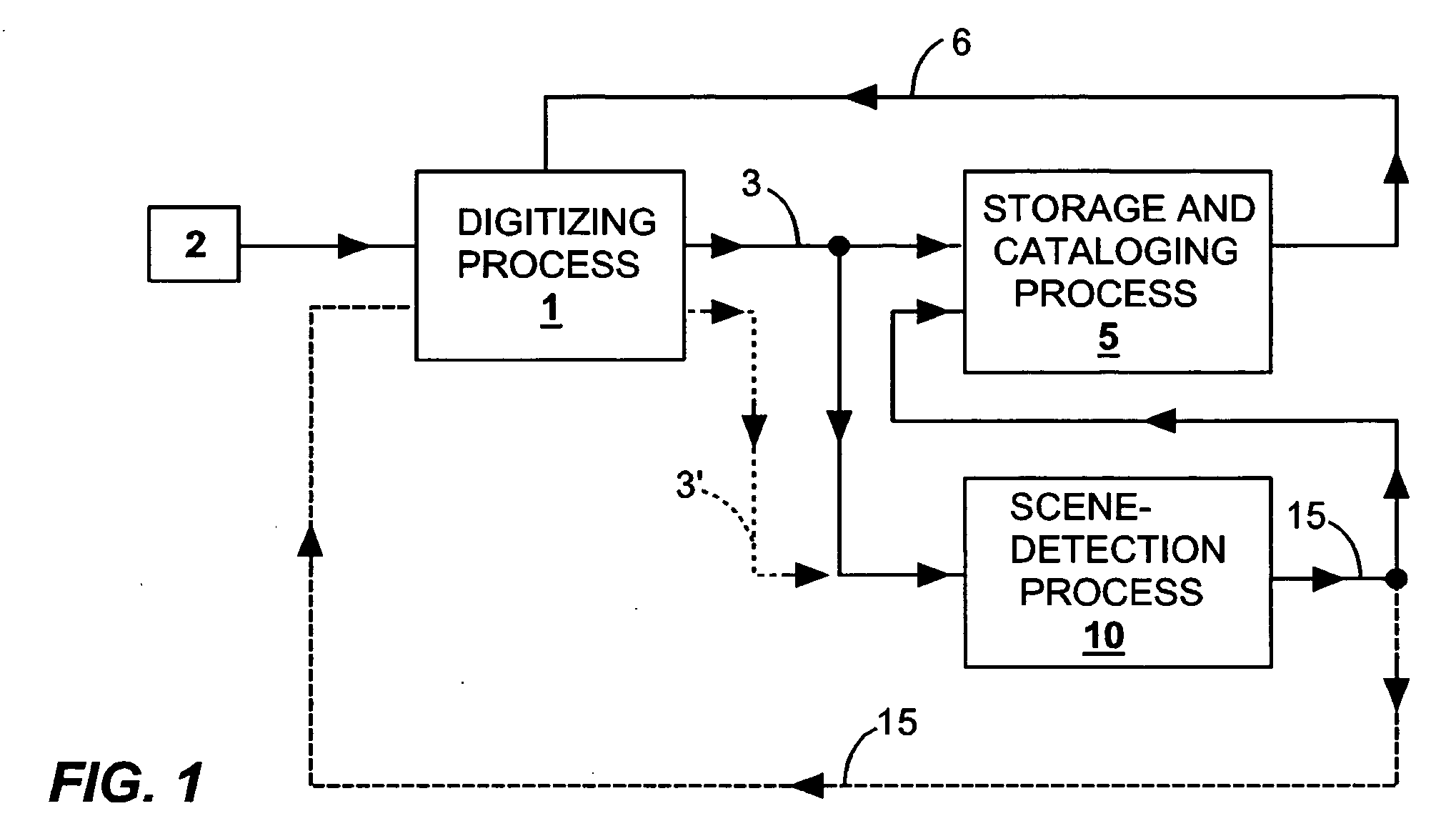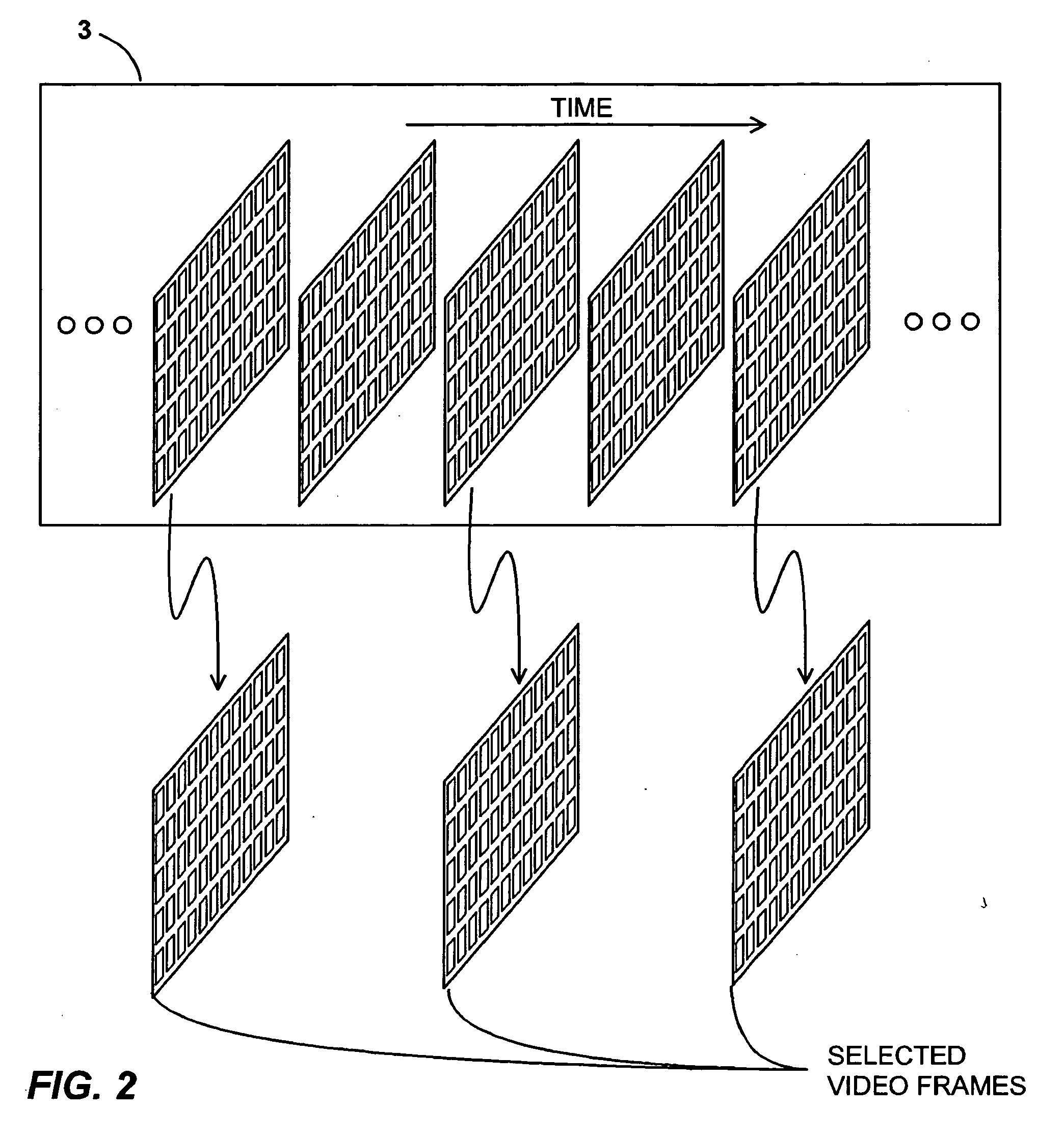Methods and apparatus for detecting scenes in a video medium
a technology of video and scene detection, applied in the direction of instruments, television systems, color signal processing circuits, etc., can solve the problems of complex task of automatically detecting scenes in local broadcasts and in video produced in the unscripted environment, and achieve the effect of reliable scene detection, low computational requirements of processors, and low computational requirements
- Summary
- Abstract
- Description
- Claims
- Application Information
AI Technical Summary
Benefits of technology
Problems solved by technology
Method used
Image
Examples
Embodiment Construction
[0031] In exemplary methods and apparatuses of the present invention, video frames of a video medium are selected in a repetitive manner over the playing time of the medium, and the pixel data values of a subset of pixels of each selected video frame are obtained, with different pixel subsets being used for successive selected video frames. An assessment of the dispersion (e.g., variation) in the pixel data values is made over successive sets of selected frames (e.g., over the playing time of the video medium), and a dispersion signal is generated from the assessment. The presence of a scene is indicated when the dispersion is above a threshold value that has been set beforehand, and the absence of a scene is indicated when the dispersion is below the threshold value. The assessment of the dispersion signal may be accomplished in a number of ways, which are described below. The exemplary methods are typically implemented by a general computer processor operating under the direction ...
PUM
 Login to View More
Login to View More Abstract
Description
Claims
Application Information
 Login to View More
Login to View More - R&D
- Intellectual Property
- Life Sciences
- Materials
- Tech Scout
- Unparalleled Data Quality
- Higher Quality Content
- 60% Fewer Hallucinations
Browse by: Latest US Patents, China's latest patents, Technical Efficacy Thesaurus, Application Domain, Technology Topic, Popular Technical Reports.
© 2025 PatSnap. All rights reserved.Legal|Privacy policy|Modern Slavery Act Transparency Statement|Sitemap|About US| Contact US: help@patsnap.com



